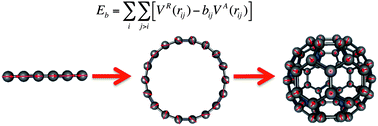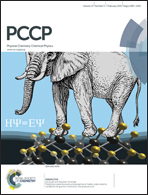Calculation of the vibrational frequencies of carbon clusters and fullerenes with empirical potentials
Abstract
Vibrational frequencies for carbon clusters, fullerenes and nanotubes evaluated using empirical carbon–carbon potentials are presented. For linear and cyclic clusters, frequencies evaluated with the reactive empirical bond order (REBO) potential provide the closest agreement with experiment. The mean absolute deviation (MAD) between experiment and the calculated harmonic frequencies is 79 cm−1 for the bending modes and 76 cm−1 for the stretching modes. The effects of anharmonicity are included via second order vibrational perturbation theory and tend to increase the frequency of the bending modes while the stretching modes have negative shifts in the region of 20–60 cm−1, with larger shifts for the higher frequency modes. This results in MADs for the bending and stretching modes of 84 cm−1 and 58 cm−1, respectively. For the fullerene molecule C60, the high frequency modes are predicted to have harmonic frequencies that are significantly higher than experiment, and this is not corrected by accounting for anharmonicity. This overestimation of experimental observed frequencies is also evident in the calculated frequencies of the G band in nanotubes. This suggests that the REBO potential is not optimal for these larger systems and it is shown that adjustment of the parameters within the potential leads to closer agreement with experiment, particularly if higher and lower frequency modes are considered separately.


 Please wait while we load your content...
Please wait while we load your content...